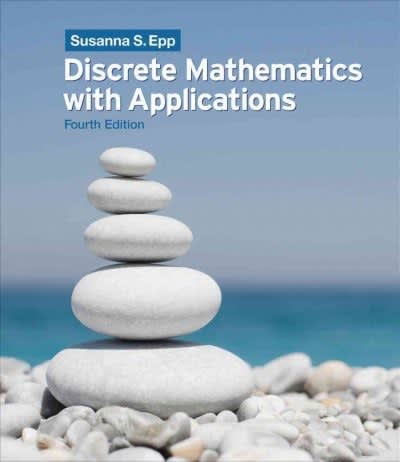Question
In a study of the accuracy of fast food drive-through orders, one restaurant had 34 orders that were not accurate among 357 orders observed. Use
In a study of the accuracy of fast food drive-through orders, one restaurant had 34 orders that were not accurate among 357 orders observed. Use a 0.01 significance level to test the claim that the rate of inaccurate orders is equal to 10%. Does the accuracy rate appear to be acceptable?
Identify the null and alternative hypotheses for this test. Choose the correct answer below.
A.
H0:
p=0.1
H1:
p0.1
B.
H0:
p0.1
H1:
p=0.1
C.
H0:
p=0.1
H1:
p<0.1
D.
H0:
p=0.1
H1:
p>0.1
Identify the test statistic for this hypothesis test.
The test statistic for this hypothesis test is
enter your response here.
(Round to two decimal places as needed.)
Identify the P-value for this hypothesis test.
The P-value for this hypothesis test is
enter your response here.
(Round to three decimal places as needed.)
Identify the conclusion for this hypothesis test.
A.
Failtoreject
H0.
There
isnot
sufficient evidence to warrant rejection of the claim that the rate of inaccurate orders is equal to 10%.
B.
Reject
H0.
There
is
sufficient evidence to warrant rejection of the claim that the rate of inaccurate orders is equal to 10%.
C.
Reject
H0.
There
isnot
sufficient evidence to warrant rejection of the claim that the rate of inaccurate orders is equal to 10%.
D.
Failtoreject
H0.
There
is
sufficient evidence to warrant rejection of the claim that the rate of inaccurate orders is equal to 10%.
Does the accuracy rate appear to be acceptable?
A.
Since there
is
sufficient evidence to reject the claim that the rate of inaccurate orders is equal to 10%, the inaccuracy rate is unacceptable, so the restaurant should work to lower that rate.
B.
Since there
isnot
sufficient evidence to reject the claim that the rate of inaccurate orders is equal to 10%, the restaurant should work to increase that rate.
C.
Since there
is
sufficient evidence to reject the claim that the rate of inaccurate orders is equal to 10%, the inaccuracy rate is acceptable.
D.
Since there
isnot
sufficient evidence to reject the claim that the rate of inaccurate orders is equal to 10%, it is plausible that the inaccuracy rate
is
10%.
Thisratewouldbetoohigh,
Step by Step Solution
There are 3 Steps involved in it
Step: 1

Get Instant Access to Expert-Tailored Solutions
See step-by-step solutions with expert insights and AI powered tools for academic success
Step: 2

Step: 3

Ace Your Homework with AI
Get the answers you need in no time with our AI-driven, step-by-step assistance
Get Started


